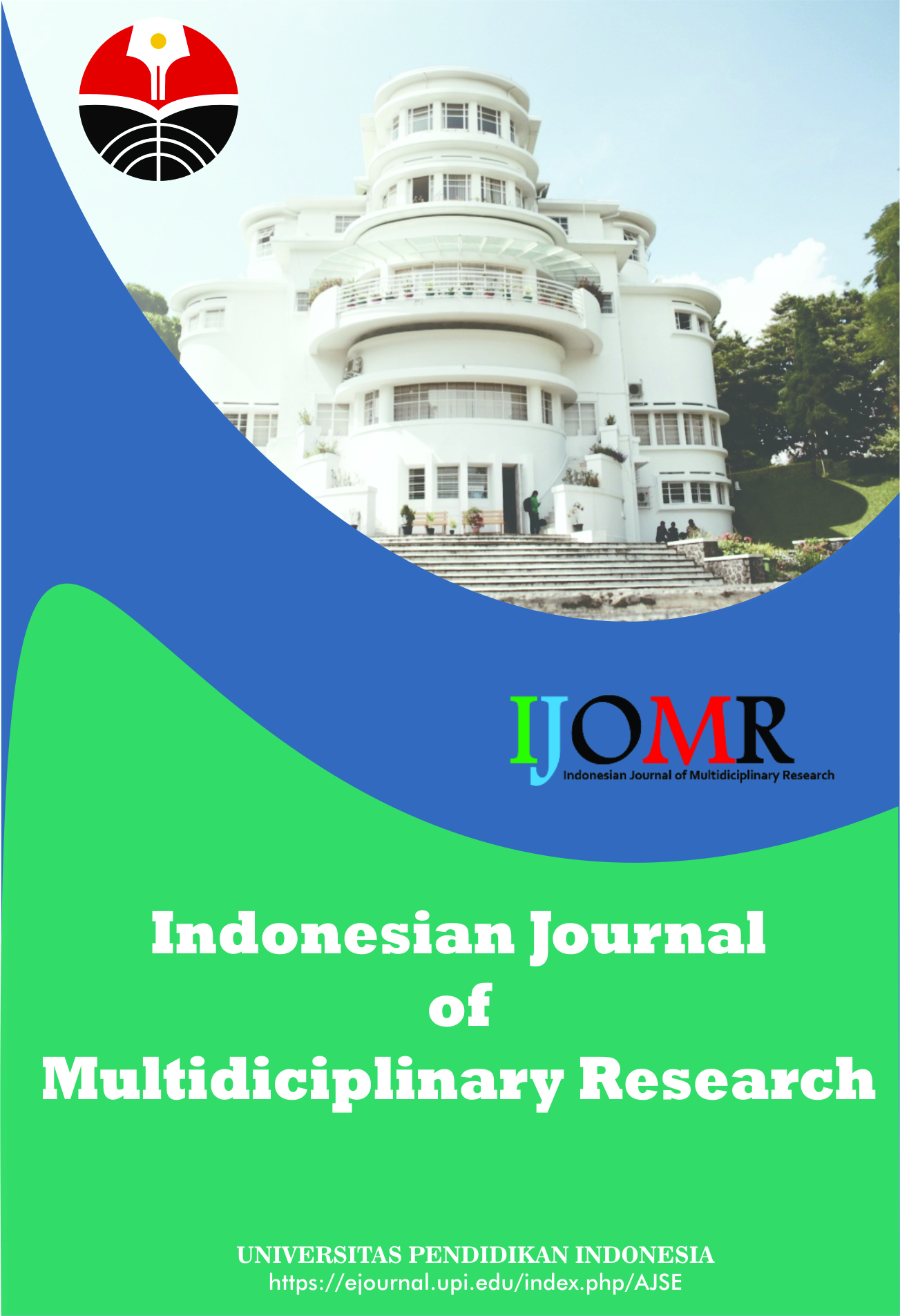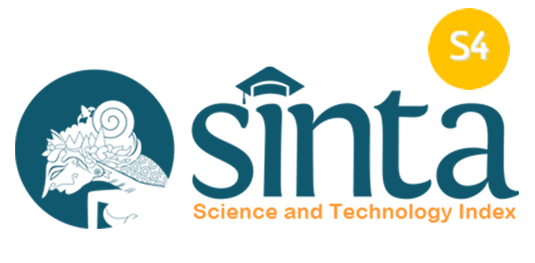Exploring Historical Seismic Events Through Secondary Data Analysis: Implications for Understanding Submarine Earthquakes in Marine Geophysics for Educational Purposes
Abstract
Keywords
Full Text:
PDFReferences
Aki, K. (1965). A note on the use of microseisms in determining the shallow structures of the earth’s crust. Geophysics, 30(4), 665-666.
Benz, H. M., Tarr, A. C., Hayes, G. P., Villaseñor, A., Furlong, K. P., and Dart, R. L. (2011). Seismicity of the earth 1900-2010 eastern margin of the Australia Plate: A region of complex interaction between the Pacific and Indo-Australian Plates. Geological Society of America Bulletin, 123(11-12), 1777-1799.
Bilek, S. L., and Lay, T. (2018). Subduction zone megathrust earthquakes. Geosphere, 14(4), 1468-1500.
Bird, P., and Stroup, J. S. (2017). Regional seismic hazard assessment of the Philippine Islands using multiple seismotectonic models. Bulletin of the Seismological Society of America, 107(2), 999-1014.
Bürgmann, R., and Dresen, G. (2008). Rheology of the lower crust and upper mantle: Evidence from rock mechanics, geodesy, and field observations. Annual Review of Earth and Planetary Sciences, 36, 531-567.
Chaytor, J. D., Goldfinger, C., Dziak, R. P., and Fox, C. G. (2004). Active deformation of the Gorda plate: Constraining deformation models with new geophysical data. Geology, 32(4), 353-356.
Dixon, T. H., Jiang, Y., and Gao, S. S. (2017). Global positioning system measurements of crustal deformation in plate boundary zones. Journal of Geophysical Research: Solid Earth, 122(3), 2163-2181.
Engel, M., Becker, M., Lauterjung, J., and Kühn, D. (2016). Detailed near-source tsunami hazard analysis for selected regions of the Indonesian coastline. Natural Hazards and Earth System Sciences, 16(11), 2423-2441.
Gusman, A. R., Tanioka, Y., Sakai, S., and Tsushima, H. (2012). Tsunami source of the 2011 off the pacific coast of Tohoku earthquake. Earth, Planets and Space, 64(7), 713-716.
Gutenberg, B., and Richter, C. F. (1944). Frequency of earthquakes in California. Bulletin of the Seismological Society of America, 34(4), 185-188.
Hayes, G. P., Moore, G. L., Portner, D. E., Hearne, M. G., Flamme, H. E., and Furtney, M. A. (2018). Slab2, a comprehensive subduction zone geometry model. Science, 362(6410), 58-61.
Kagan, Y. Y., and Jackson, D. D. (1991). Long-term earthquake clustering. Geophysical Journal International, 104(1), 117-133.
Kagan, Y. Y., and Knopoff, L. (1987). Statistical short-term earthquake prediction. Science, 236(4808), 1563-1567.
Khurram, S. and Khalid, P. (2021). Moment tensor components with their corresponding eigen values and eigen vectors for earthquakes Mw ≥ 6.0 in Northern and Southwestern of Pakistan. ASEAN Journal of Science and Engineering, 1(2), 79-96.
Kodaira, S., No, T., Nakamura, Y., Fujiwara, T., Kaiho, Y., Miura, S., and Taira, A. (2012). Coseismic fault rupture at the trench axis during the 2011 Tohoku-oki earthquake. Nature Geoscience, 5(9), 646-650
Lay, T., Kanamori, H., Ammon, C. J., Nettles, M., Ward, S. N., Aster, R. C., and Furlong, K. P. (2019). The 2018 Mw 7.5 Palu earthquake, Sulawesi, Indonesia: A tsunami earthquake generated by strike-slip faulting near the trench. Science, 363(6432), 1033-1037.
Lin, J. C., Sladen, A., Ortega‐Culaciati, F., Simons, M., Avouac, J. P., Fielding, E. J., Moore, A. (2016). Coseismic and postseismic slip associated with the 2015 Mw 8.3 Illapel, Chile, earthquake: Characterizing the earthquake slip field and the role of viscoelastic relaxation. Journal of Geophysical Research: Solid Earth, 121(2), 1043-1070.
Liu, Z., Ding, X., and Zhang, J. (2019). Submarine earthquakes offer valuable information about the distribution and characteristics of faults beneath the seafloor. Through detailed analysis of seismic data, researchers can identify fault systems, their segmentation, and associated slip rates. Marine Geology, 410, 134-145.
Lubetkin, M., Raineault, N., and Gaines, S. (2021). Envisioning an interconnected ocean: Understanding the Links between geological ocean structure and coastal communities in the pacific. Marine Technology Society Journal, 55(3), 68-69.
Madariaga, R. (1976). Dynamics of an expanding circular fault. Bulletin of the Seismological Society of America, 66(3), 639-666.
Melgar, D., Bock, Y., Crowell, B. W., and Haase, J. S. (2017). Kinematic earthquake source inversion and tsunami run-up models for the 2011 Tohoku-oki event. Geophysical Research Letters, 44(11), 5483-5491.
Micallef, A., Camerlenghi, A., Garcia-Castellanos, D., Cunarro Otero, D., Gutscher, M. A., Barreca, G., ... and Urlaub, M. (2018). Evidence of the zanclean megaflood in the eastern mediterranean basin. Scientific Reports, 8(1), 1-8.
Mohammadioun, B., Bui, T. D., Pradhan, B., and Nampak, H. (2020). Spatial prediction of earthquake-induced landslide susceptibility using an ensemble of machine learning algorithms. Geocarto International, 35(7), 736-755.
Papaioannou, G., Mazzini, A., Hübscher, C., and Gawthorpe, R. L. (2018). By mining these datasets, researchers can investigate historical seismic events and derive valuable insights regarding their occurrence and distribution in marine environments. Marine and Petroleum Geology, 98, 299-312.
Perez-Campos, X., Kim, Y., Husker, A., Clayton, R. W., Davis, P. M., Iglesias, A., and Singh, S. K. (2017). Seismicity in the tectonically complex region of Oaxaca, Mexico. Geophysical Journal International, 211(3), 1886-1906.
Plattner, C., Kopp, H., Klaucke, I., and Jegen, M. (2016). Multiscale analysis of seafloor morphology and tectonic structures along the Eastern Walvis Ridge, South Atlantic. Geochemistry, Geophysics, Geosystems, 17(2), 494-513.
Satake, K. (2015). Tsunamis. Annual Review of Marine Science, 7, 283-307.
Smith, D. K., and Cann, J. R. (2015). Hydrothermal circulation, serpentinization, and the geological environment of the Lost City hydrothermal field. Geosphere, 11(3), 659-671.
Tinti, S., Pagnoni, G., Zaniboni, F., and Armigliato, A. (2013). Secondary data analysis involves the utilization of existing data collected for different purposes, such as earthquake monitoring networks, ocean-bottom seismometers, and research cruises. Pure and Applied Geophysics, 170(6-8), 1099-1109.
Utsu, T. (1999). Representation and analysis of the earthquake size distribution: A historical review and some new approaches. Pure and Applied Geophysics, 155(2-4), 509-535.
Wibberley, C. A., and Shimamoto, T. (2005). Earthquake slip weakening and asperities explained by thermal pressurization. Nature, 436(7051), 689-692.
DOI: https://doi.org/10.17509/ijomr.v3i2.58659
Refbacks
- There are currently no refbacks.
Copyright (c) 2023 Kantor Jurnal dan Publikasi, Universitas Pendidikan Indonesia (UPI)

This work is licensed under a Creative Commons Attribution-ShareAlike 4.0 International License.
Indonesian Journal of Multidiciplinary Research (IJOMR) is published by Universitas Pendidikan Indonesia (UPI)















